In this article, we are going to study What is Milling Machine? And it’s sub-topics like Introduction, Definition, Main Parts, Operation, Types, Advantages, Disadvantages in detail.
Note: The PDF of this article you can download it at the end.
Starting with the history first,
Milling Machine History:
The milling machine is believed to come into existence in 17 the century. It was used by the clockmakers at that time. Then in the 18th century in the united states, a machine was used which was similar to the lathe machine but in this machine, The cutting tool is used to rotate and the workpiece uses to remain stationary.
This was the better-developed form of the Milling machine. Inventor name: Eli Whitney invented the Milling machine in the year 1818.
During that time, it was used for the making of gun parts. Eli Whitney got a big order from the government for the production of Musket.
Later he developed a semi-automatic Milling machine which further enhanced the production. He also added a cutter to the machine.
Now, these machines can perform multiple operations. Gradually with time now we have the most advanced form of the Milling machine which is the CNC Milling Machine. It is very accurate and has a high production speed
Milling Machine Introduction:
A milling machine is one of the most influential and versatile kinds of machines found in the manufacturing industry.
Milling is the most widely used machine in machine shops and modern manufacturing industries all over the world.
It is a type of machining process in which a cutter having multiple cutting edges is used to remove the material from the workpiece. This machine tool makes up about 85 percent of all material removal processes.
Milling Machine Definition:
The milling machine is a type of machine which removes the material from the workpiece by feeding the work past a rotating multipoint cutter. The metal removal rate is higher very high as the cutter has a high speed and many cutting edges.
It is the most important machine in the tool room as nearly all the operations can be performed on it with high accuracy.
MRR (Material Removal Rate) can be further increased by increasing the number of teeth on the cutter.
Milling Machine Application or Uses:
Milling Machine is used for Machining flat surfaces, Slotting, Contoured surfaces. It is also useful for making Complex and irregular areas, Revolution surface, Gear cutting, Machining external and internal threads. Machining helical surfaces of various cross-sections and many more.
Milling Machine Parts:
The Milling Machine consists of Base, Column, Knee, Saddle, Table, Over-Arm, Spindle or Arbor, Arbor supports, Ram, and Milling Head.
We will study one by one in detail.
Here in this Milling machine diagram, you can easily see Its parts.
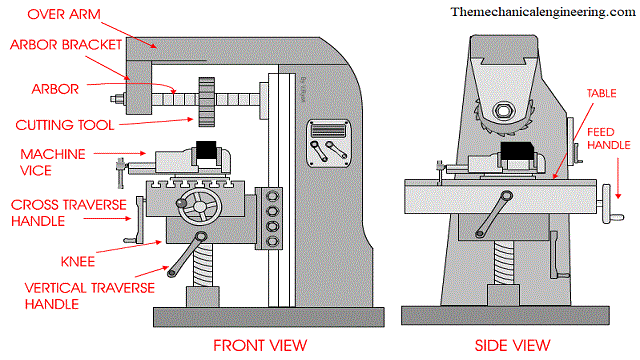
#1. Base:
The base is the part upon which the whole machine parts are being mounted. It is a type of foundation for the machine.
The base is mostly made up of cast iron, so it has good strength and rigidity. It also helps in the absorption of shocks. Cutting fluid can also be stored in the base.
#2. Column:
The main supporting frame which consists of all the driving mechanisms and the motor is called the column.
The driving mechanism usually consists of a cone pulley mechanism in which the v-belt is being used to connect it to the motor.
Further by using this driving mechanism the speed of the machine can control as per our requirement.
#3. Knee:
The knee shape is quite similar to that of the human body knee. This is an important part of this machine that supports the other parts like the saddle and table.
It is attached to the column and has guideways by which it can move up and down with the help of the elevating screw for adjusting its height.
#4. Saddle:
The saddle is present on the top of the knee which further carries the table. Its basic function is to support the table.
A saddle can slide on the guideways which are exactly at 90 degrees to the column face. Saddle moves crosswise(in or out) on guideways provided on the knee.
#5. Table:
The table is present on the top of the saddle. The table consists of T-slots or sometimes fixtures are used for holding up the workpiece on the table. A table can travel longitudinally in a horizontal plane.
#6. Over-arm:
It is also called the over-hanging arm. Overarm is present at the top of the column. The basic function of the over-arm is to support the arbor and spindle.
#7. Spindle or Arbor:
The top portion of the column contains the spindle. The spindle is also an important part of the machine as it is the part where the multipoint cutter is attached.
Power required for the rotation of the spindle is obtained from the motor through the belt, gear, and clutch assembly.
Milling Machine Working Principle:
- Milling machine employed in the metal removing operation in which the work is rigidly clamped on the table of the machine and the revolving cutter which has multiple teeth is mounted on the arbor.
- The cutter revolves at high speed and the work is fed slowly past the cutter.
- The work can be fed in a vertical, longitudinal, or cross direction depending upon the type of milling machine being used.
- As the work proceeds, the cutter-teeth removes the metal from the surface of the job(workpiece) to produce the desired shape.
Milling Machine Operations:
The following Operation is performed by the Milling Machine:
- Plain or Slab Milling Operation
- UP and DOWN Milling Operation
- Face Milling Operation
- End Milling Operation
- Gang Milling Operation
- Straddle Milling Operation
- Groove Milling Operation
- Gear Milling Operation
- Side Milling Operation and
- T-Slot Milling Operation
The milling machine does not give a continuous cut like in the case of the Lathe Machine.
First, the wheel of the cutter slides on the surface followed by the crushing movement, and then the cutting movement by which the unwanted material is removed from the workpiece.
#1. Plain Milling or Slab Milling Operation:
Plain or slab milling is a process in which the plain, horizontal or flat surfaces are produced, which are parallel to the axis of the rotation of the cutter. A peripheral mill cuter is used for performing the slab milling operation.
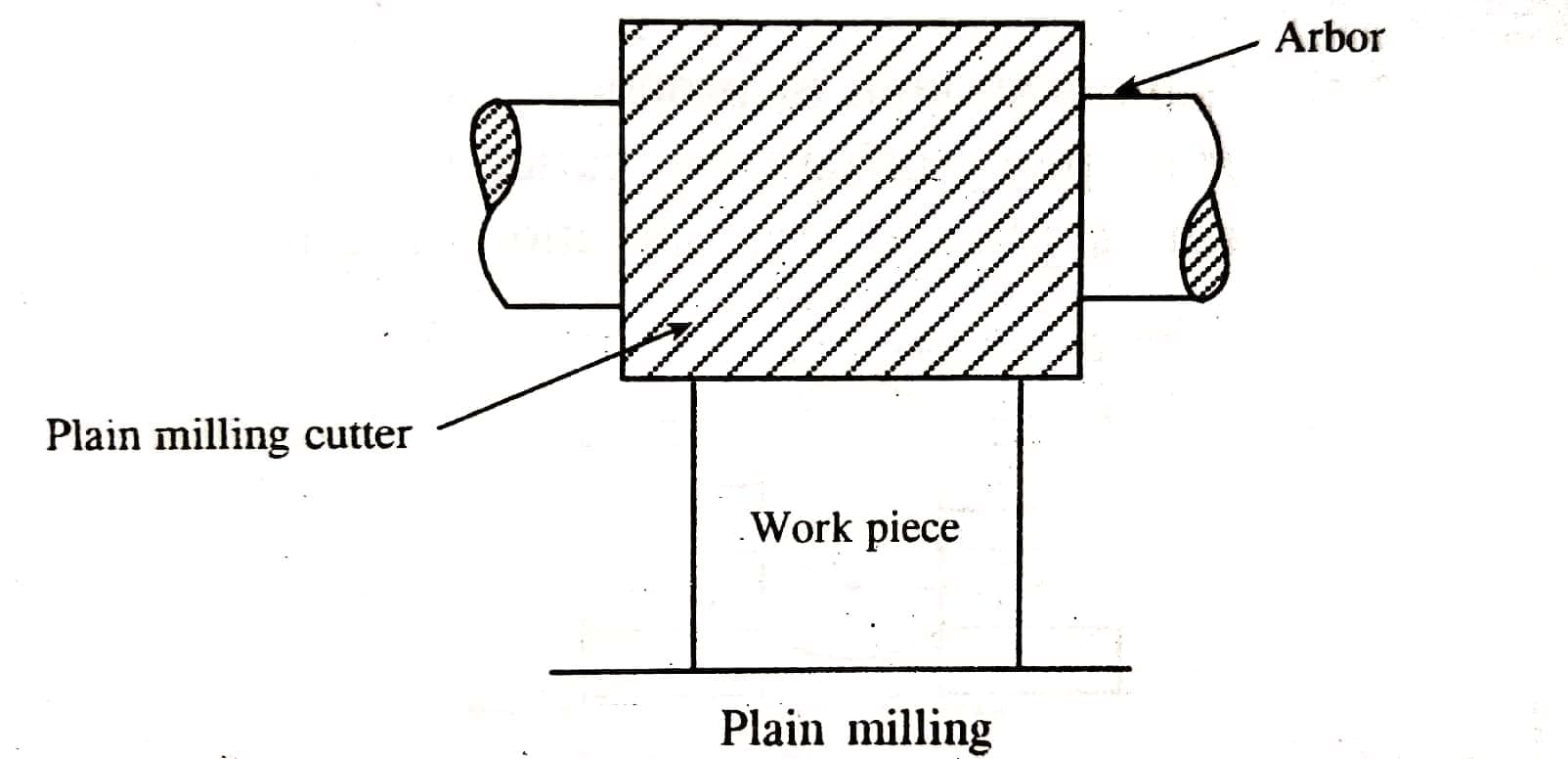
#2. Up Milling and Down Milling:
Up milling is a method of milling operation in which the cutter and the workpiece both move in the opposite direction.
Down Milling is a method of milling operation in which the direction of the rotation of the cutter coincides with the direction of the work feed.
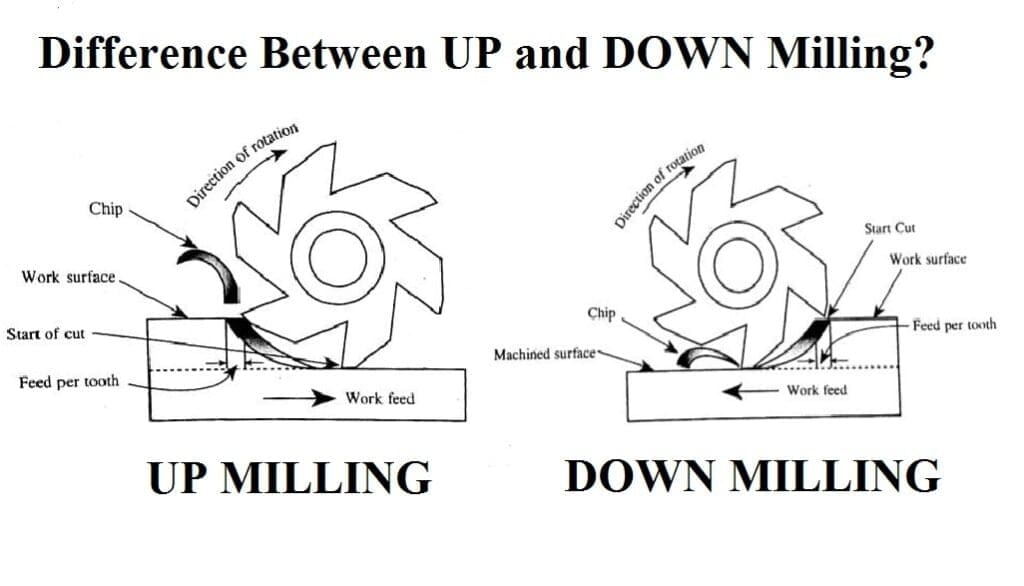
Chip Thicknesswill be minimum in the beginning and maximum at the end in the case of up-milling. Whereas, the chip thickness will be greater at the beginning and lesser at the end in the case of down-milling.
Tool Life will is more in the case of down-milling as compared with the up-milling.
The surface finish will be more in the case of the down-milling as compared with the up-milling method due to which down-milling method is used for the finishing operations in the industries.
Accuracy will be more in the case of up-milling as compared with the down-milling process since in up-milling the workpiece is pulled against the table so the fasteners will be under tension and we know that under tension the backlash error will not have any effect which ultimately results in the better accuracy in up-milling.
#3. Face Milling Operation:
It is a type of milling operation in which the layer of material is removed from the face of the material. The end milling cutter is preferred for performing face milling operations.
In Face Milling operation the teeth for cutting are present on both the periphery and the face of the cutter.
The axis of rotation of the cutter is perpendicular to the work surface. In face milling most of the cutting is done by the periphery portions of the teeth, the face portion provides finishing the action.
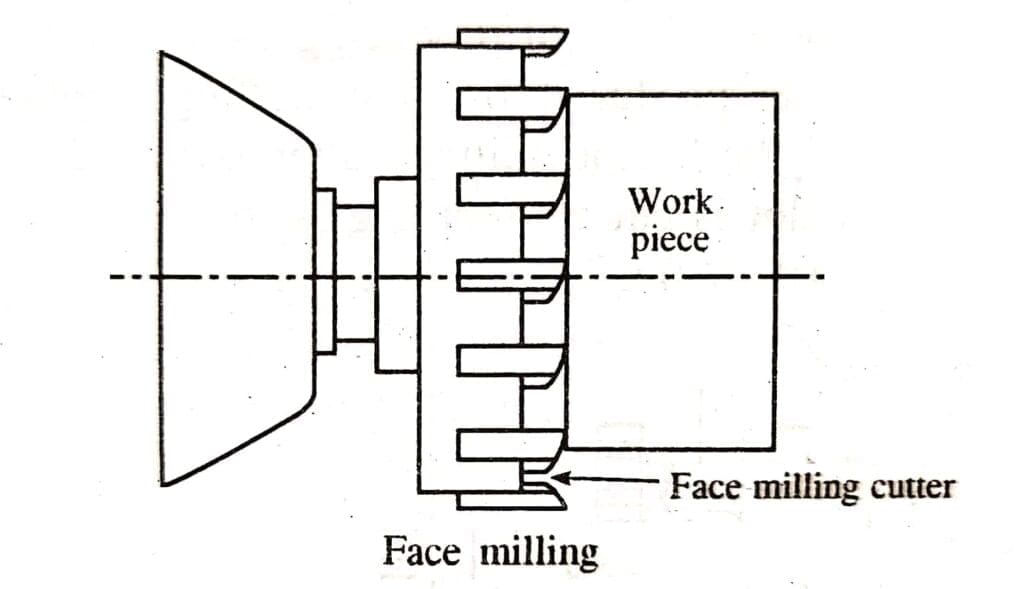
#4. End Milling Operation:
This type of operation is the combination of the slab milling and face-milling operation used for creating slots in the workpiece and is mostly used for handling the complicated profile.
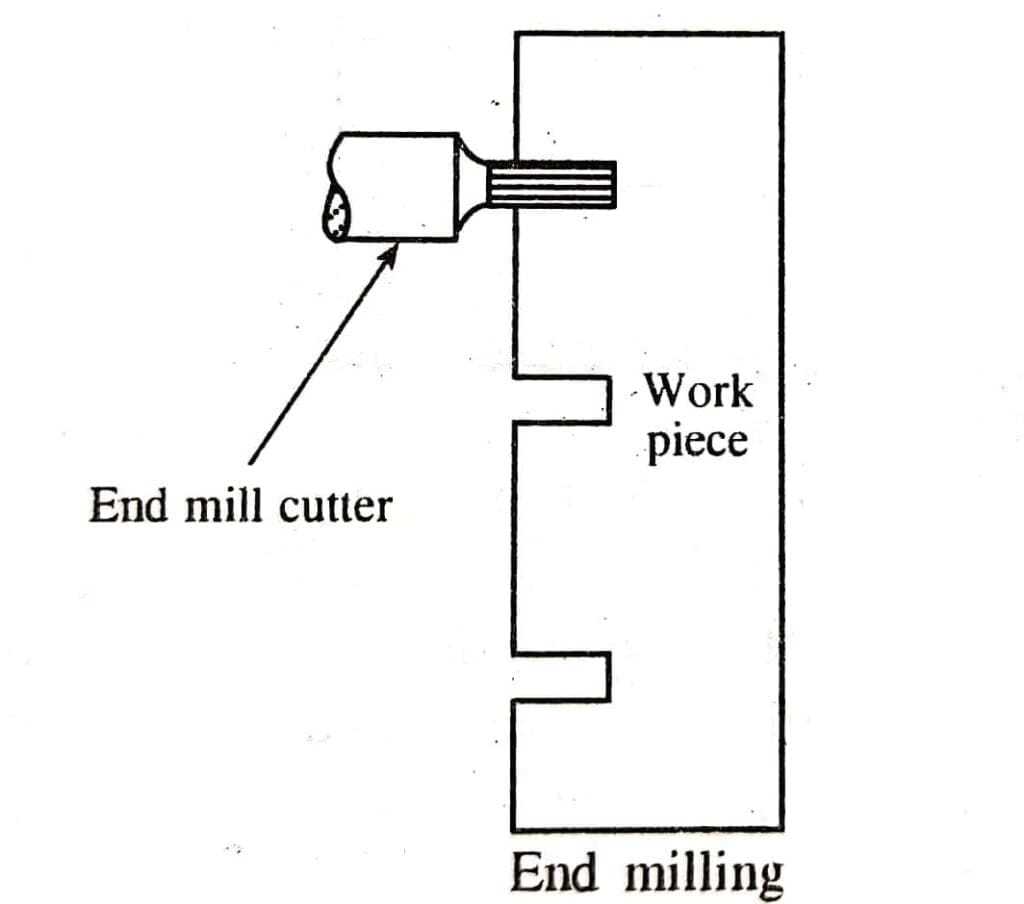
#5. Gang Milling Operation:
This is a type of milling operation in which multiple cutters are being mounted on the same arbor to produce the desired shape on the workpiece.
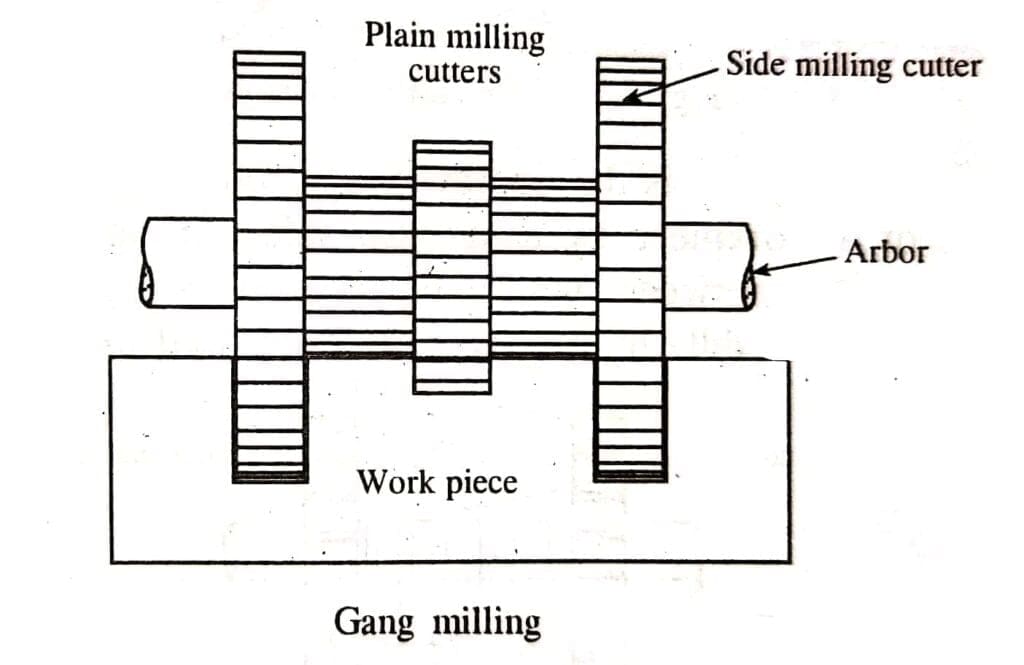
#6. Straddle Milling Operation:
The straddle is the type of milling process in which milling is performed on two surfaces simultaneously. T-slot milling is a unique example of straddle Milling.
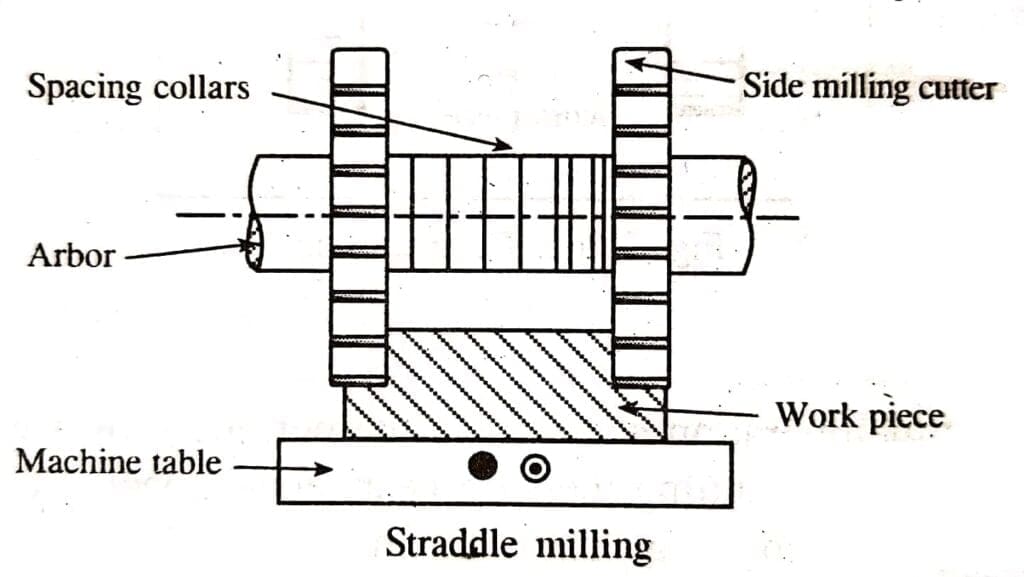
Milling Machine Working Video:
Advantages of Milling Machine:
The various advantages of Milling are:
High speed: In Milling, the rate of metal removal is very high as the cutter rotates at a high speed and has multiple cutting edges.
Better surface finish: The surface finish of the materials machined on the milling machine is better because of the multi-cutting edges.
Increased Productivity: CNC Milling Machines are the machines in which the milling operation is being controlled by software. It has increased the overall production with better finish and accuracy.
High Accuracy: In the milling machine, the products machined are of high accuracy, especially in the case of the most advanced form of milling machine which is the CNC Machine.
Huge Application: The indexing head makes it suitable for so many applications as the exact rotation of the job is possible by the use of it. Milling can be used for machining flat surfaces, irregular surfaces, contoured surfaces, slotting, gear cutting, and many more.
Milling Machine disadvantages with remedies:
The disadvantages of the milling machine are as follows:
High Flank wear: It has a high flank wear rate which can be prevented by reducing speed and increasing the feed rate. Further to avoid it one should use harder carbide with proper geometry and sharpened cutting edges.
High crater wear: High crater wear is found which can be tackled by reducing speed and using harder carbide.
Breaking of carbide: Sometimes the production process gets hindered because of the breaking of the carbide. The remedy for this problem can be the use of tougher carbide, and rigidity of the cutter, machine, and arbor should be ensured.
High Chatter: This happens due to poor rigidity of cutter, machine, loose arbor, and improper geometry. This situation can be improved by increasing feed, reducing speed, and using unequal pitch cutters.
Chip clogging: The milling machine also suffers from the problem of chip clogging which can be reduced by using reducing the number of teeth on the cutter and increasing speed and chip pockets.
This is all about Milling machines. If you want any further topics to discuss just comment down and it will be added soon. If this article helps you then do visit another article too. Thank you for your valuable time for reading.
Internal Resources:
- UP Milling vs Down Milling
- NC Machine vs CNC Machine
- Drilling Machine
- Shaper Machine
- Planer Machine
- Slotter Machine
- Grinding Machine
- Punch Press Machine
- NC Machine
External Resources:
- https://en.wikipedia.org/wiki/Milling_(machining)
- https://www.sciencedirect.com/topics/engineering/milling-machines
- https://nptel.ac.in/content/storage2/courses/112105127/pdf/LM-19.pdf
- https://www.youtube.com/watch?v=GowC2UQPWe8
Question and answers:
The milling machine is a type of production machine which removes the material from the workpiece by feeding the work post a rotating multipoint cutter. The metal removal rate is higher as the cutter has a high speed and many cutting edges.
Arbor is similar to the tool holder. The tool is fixed into it.
The main features are providing a flat surface of the workpiece.
The milling machine is used to make gears and more.

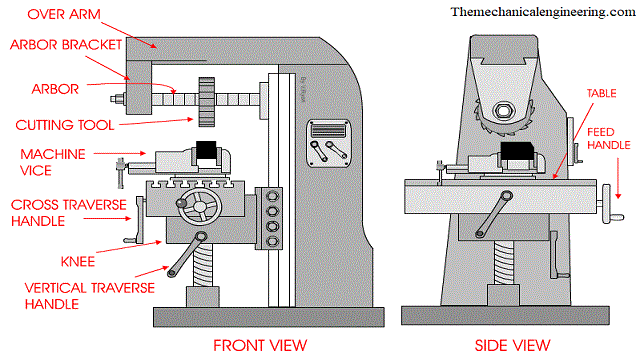

![Different Types of Measuring Tools and their Uses [Notes & PDF] Feature Image of Types of Measuring Tools](https://themechanicalengineering.com/wp-content/uploads/2023/01/Feature-Image-of-Types-of-Measuring-Tools-300x171.jpg)
![Steel: Properties, Different Types and Applications [Notes & PDF] Feature Image of Steel](https://themechanicalengineering.com/wp-content/uploads/2023/01/Feature-Image-of-Steel-300x168.jpg)
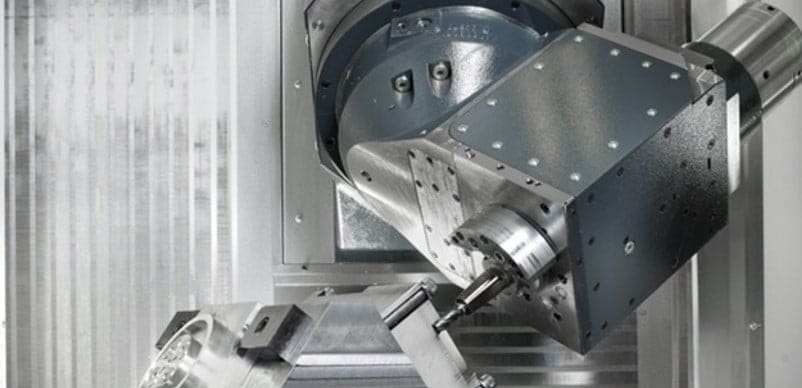
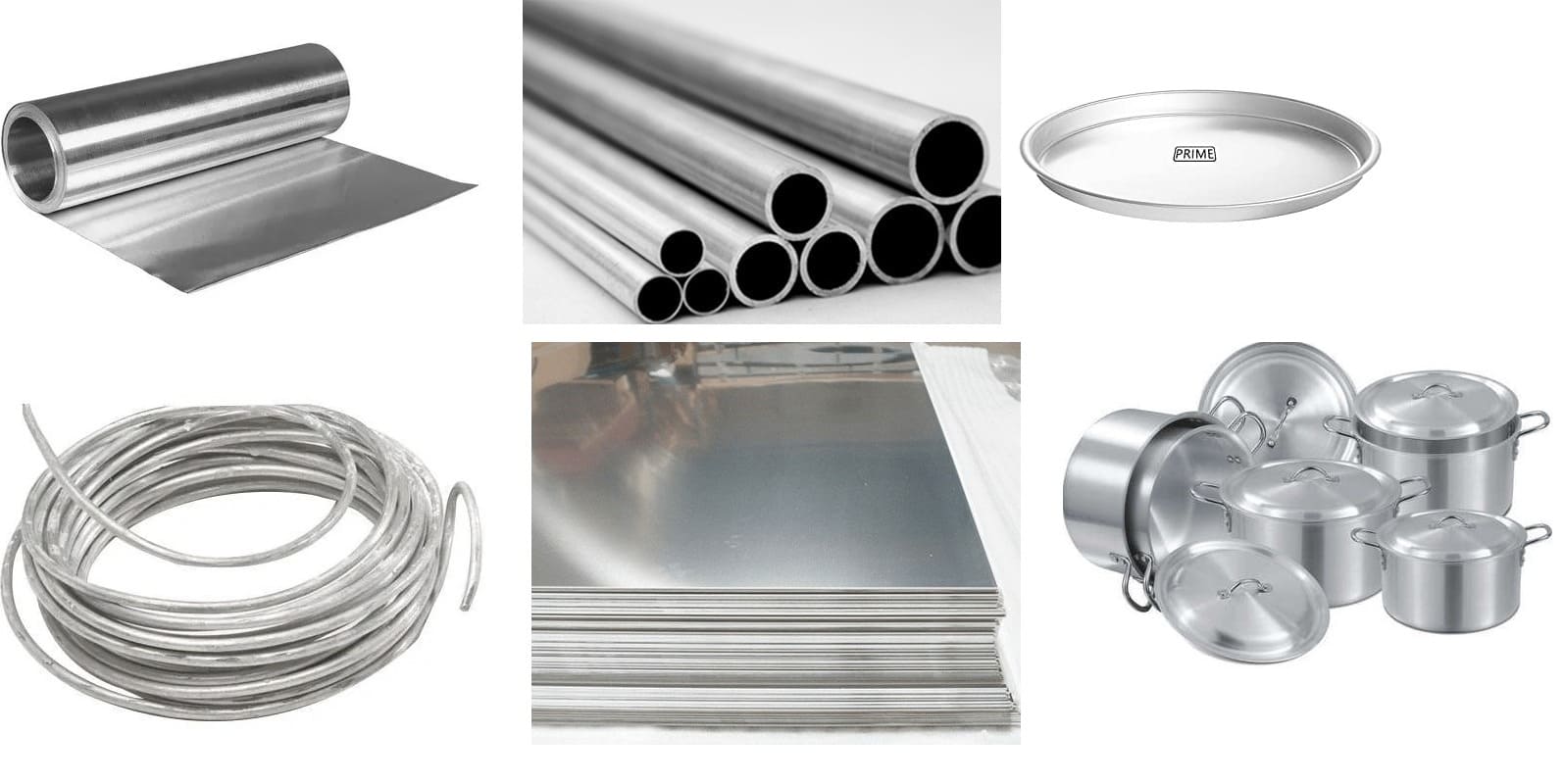
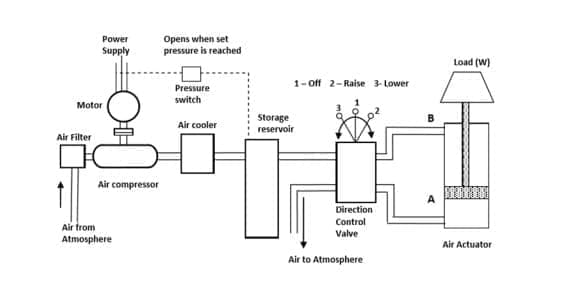
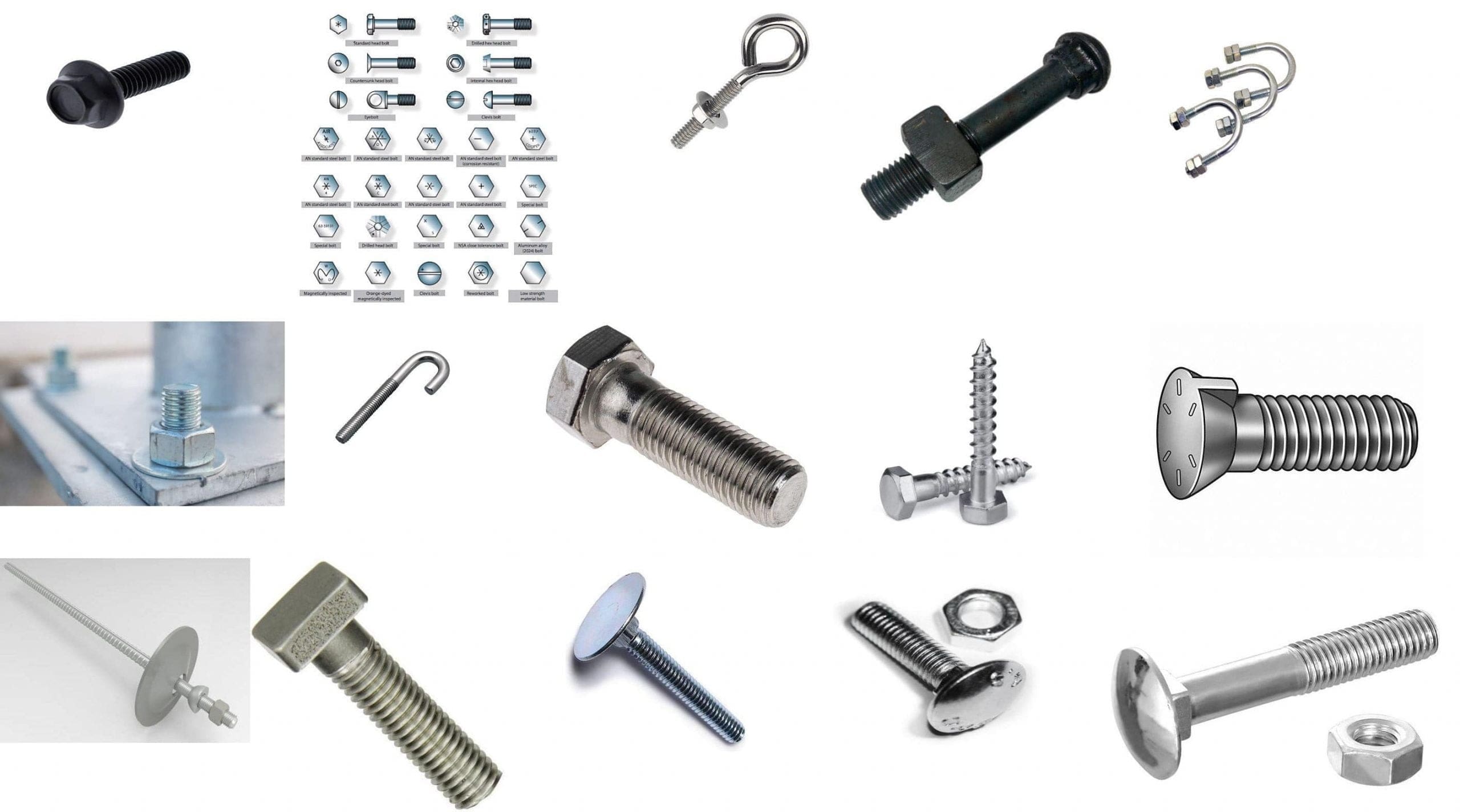
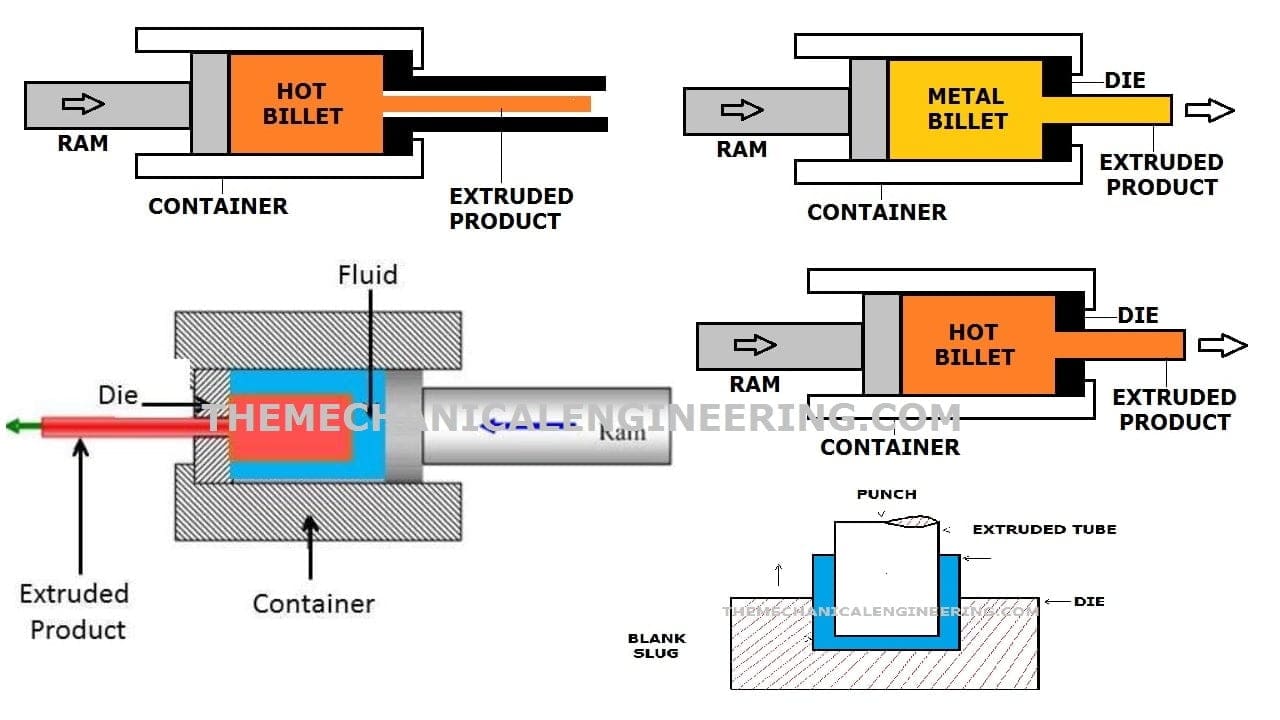
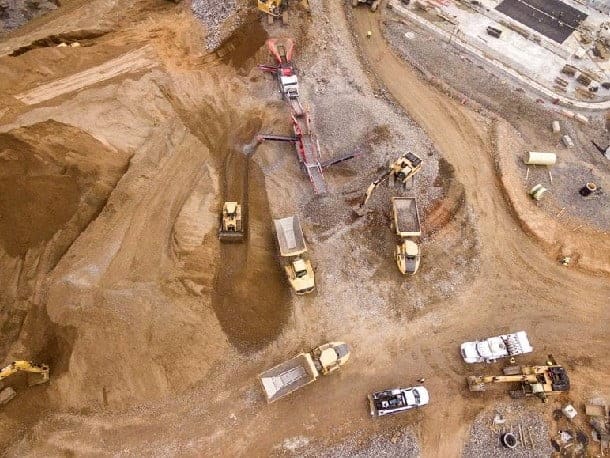
Discussion about this post